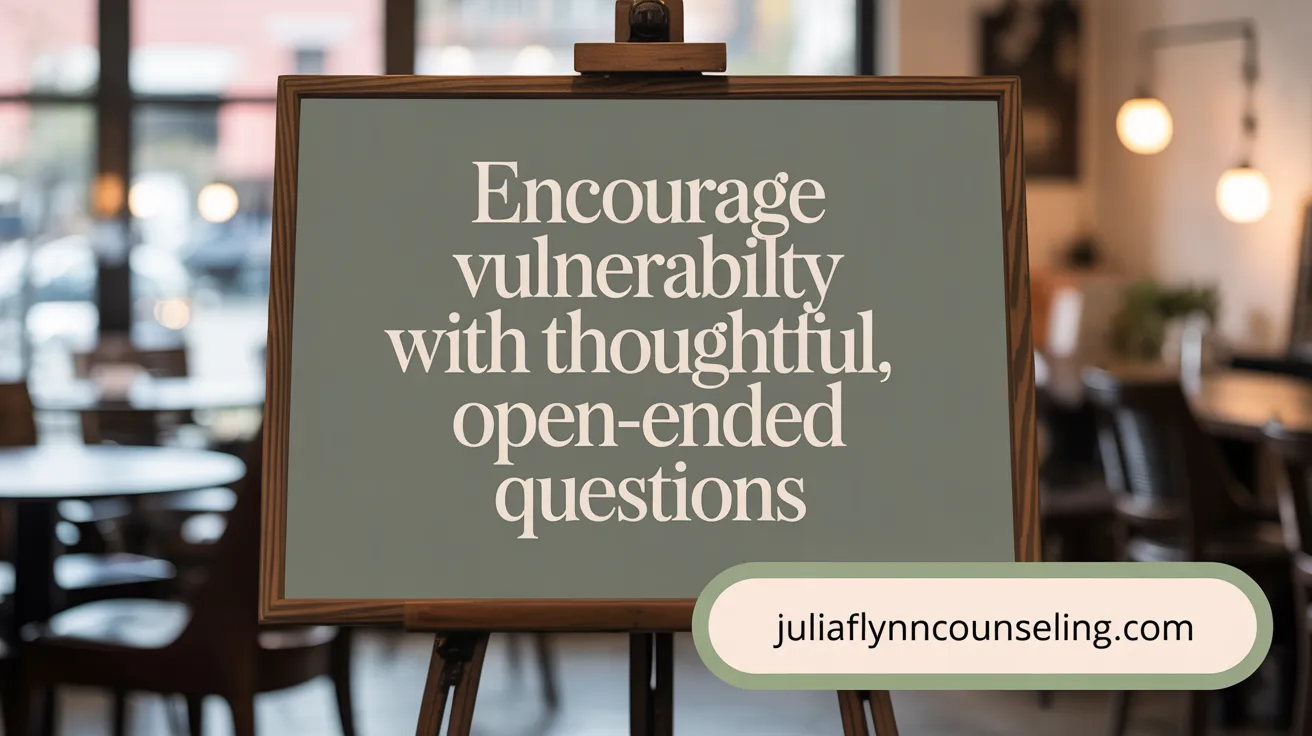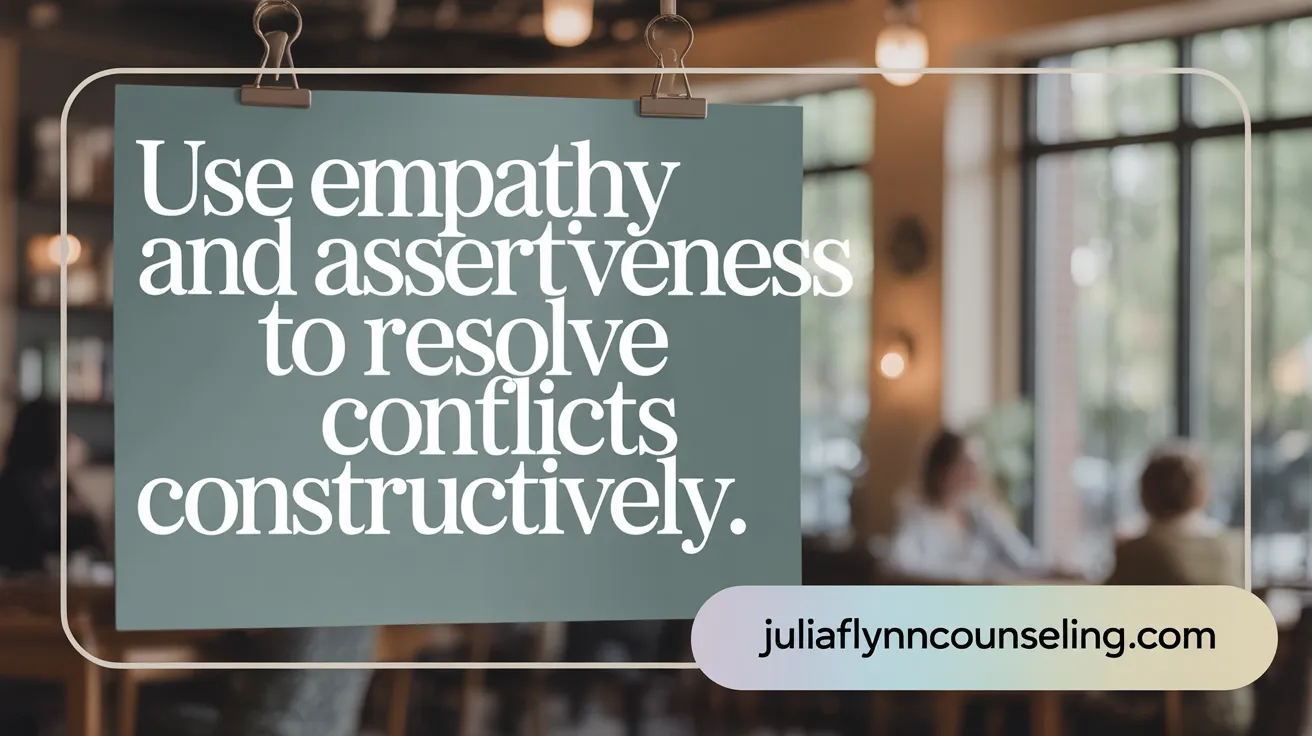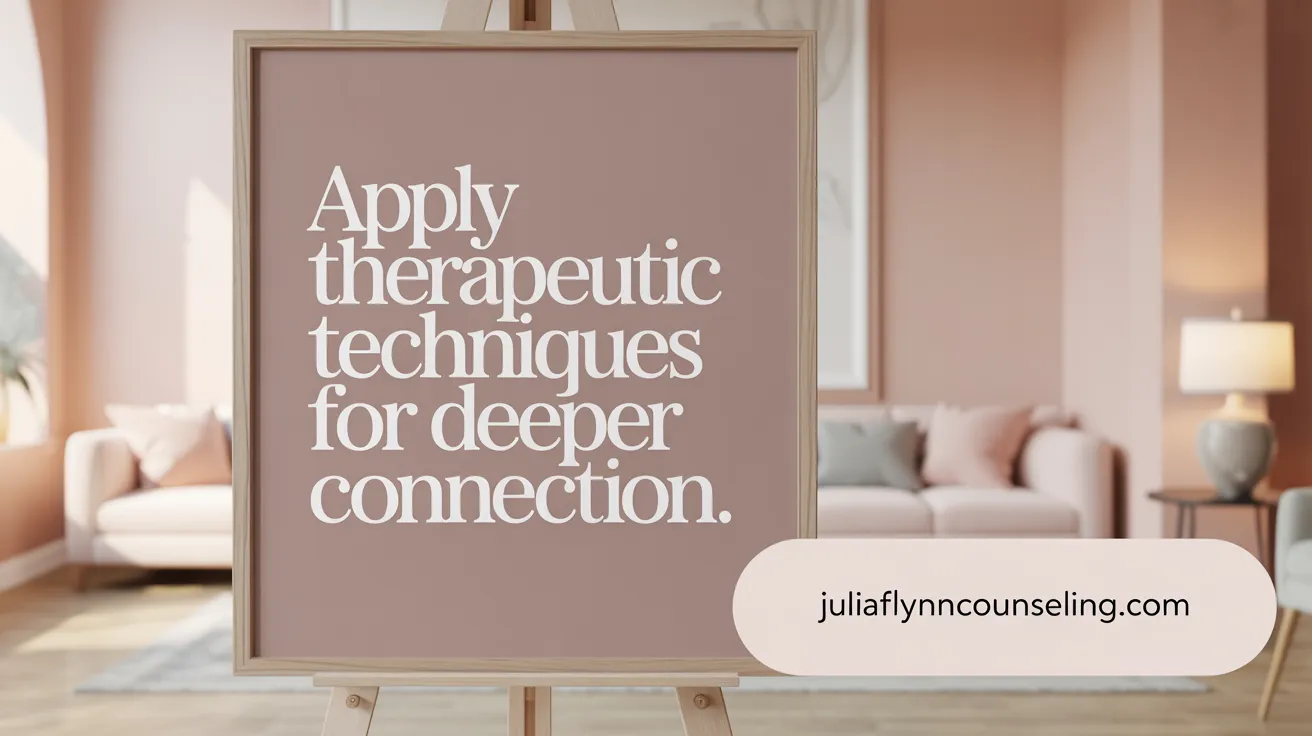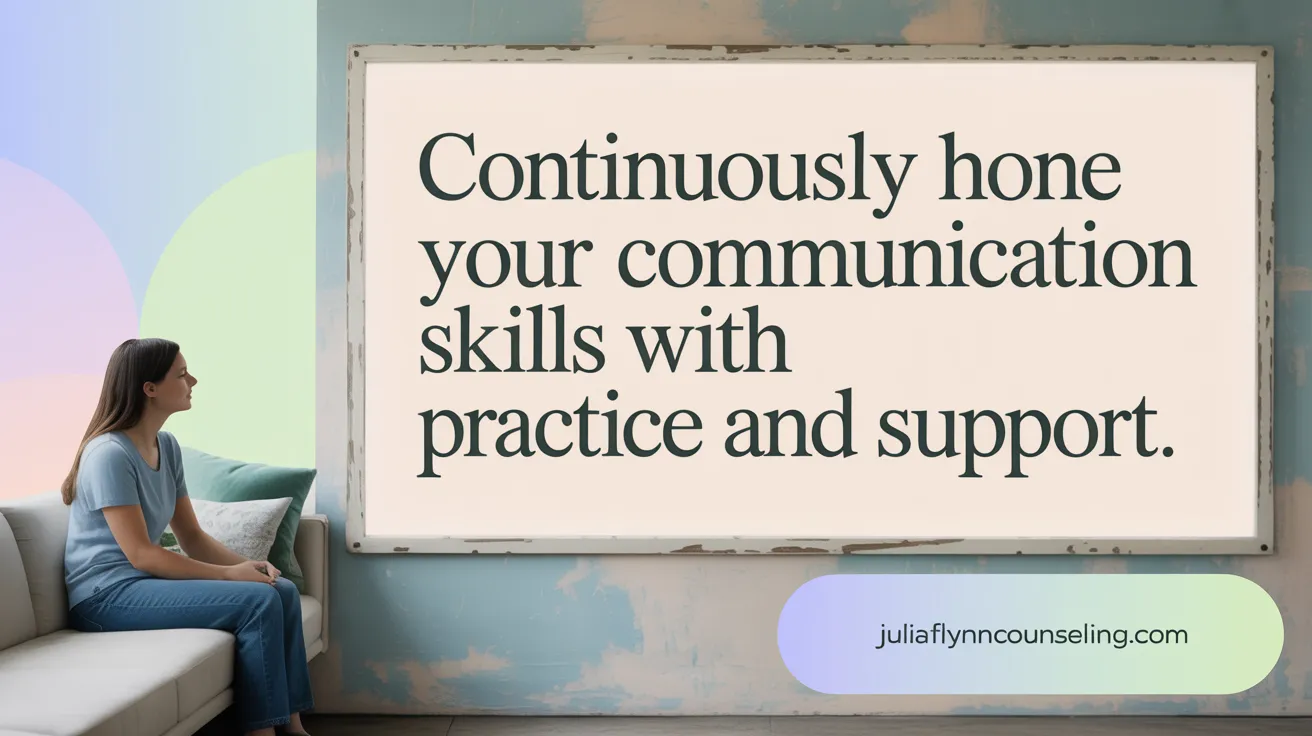The Power of Communication in Building Lasting Relationships
Importance of Communication in Relationships
Communication is the foundation upon which healthy and lasting relationships are built. It allows individuals to express their feelings, share experiences, and convey needs clearly and honestly. Without open dialogue, misunderstandings and resentment can grow, making it difficult to resolve conflicts or nurture emotional bonds.
How Communication Fosters Trust and Intimacy
Trust and intimacy develop when partners feel heard and understood. This is achieved through active listening and paying attention not only to words but also to nonverbal cues such as tone of voice, facial expressions, and body language. Sharing thoughts openly and using "I" statements helps reduce defensiveness, fostering a safe space for vulnerability. Regular, dedicated conversations nurture emotional connection, preventing small issues from escalating.
Overview of Strategies to Deepen Relational Bonds
Effective strategies to enhance relationship communication include:
- Active Listening: Being fully present, reflecting back feelings, and avoiding interruptions.
- Open-Ended Questions: Encouraging meaningful dialogue allows partners to explore deeper emotions.
- Honest and Direct Expression: Sharing needs and feelings clearly prevents assumptions.
- Scheduled Check-Ins: Regular sessions dedicated to discussing relationship health promote ongoing connection.
- Use of 'I' Statements: Communicating personal experiences rather than assigning blame.
- Recognition of Nonverbal Signals: Understanding gestures and tone strengthens emotional attunement.
Practicing these approaches with empathy and respect creates a nurturing environment, strengthening bonds and maintaining a resilient relationship.
Foundations of Effective Communication: Active Listening and Presence
What Are Active Listening Techniques?
Active listening involves fully focusing on the speaker, showing interest through body language, and avoiding interruptions. Key techniques include maintaining eye contact, paraphrasing what the speaker says, asking open-ended questions to encourage deeper sharing, and reflecting feelings to show empathy. Listening actively also means being willing to be changed by what you hear, fostering curiosity and respect in conversations. For more detailed effective communication techniques and active listening strategies, see these resources.
Why Is It Important to Be Fully Present?
Being fully present means giving your undivided attention to your partner during conversations. It involves turning off distractions, facing the speaker, and expressing interest through gestures like nodding and relaxed posture. This presence helps convey respect and makes the speaker feel valued and understood. It strengthens emotional connection by showing that you prioritize the interaction. Learn more about building emotional connection and the importance of nonverbal cues.
How Does Active Listening Build Understanding and Connection?
Active listening creates a safe environment for open dialogue, allowing partners to share thoughts and feelings without fear of judgment. By clarifying and reflecting what is said, it reduces misunderstandings and nurtures trust. This process fosters empathy and mutual respect, which are essential for deepening intimacy and resolving conflicts constructively. In this way, active listening becomes the foundation for stronger, healthier relationships. Explore more on effective communication in relationships and tips for healthy relationships.
Asking Open-Ended Questions: Encouraging Deeper Sharing

Benefits of Open-Ended Questions
Asking open-ended questions in relationships invites partners to share more deeply about their feelings, thoughts, and experiences. Unlike yes/no queries, these questions encourage elaboration, fostering meaningful conversation sessions and helping individuals feel valued and heard. This style of questioning strengthens emotional ties by promoting vulnerability and honesty.
Examples of Questions That Promote Emotional Expression
Some examples include:
- "What was the best part of your day today?"
- "How did that situation make you feel?"
- "What are your hopes for us in the coming year?"
- "Can you tell me more about what's been on your mind lately?"
These questions open space for meaningful dialogue, allowing partners to express themselves fully without feeling rushed or judged, supporting effective communication practices.
Impact on Trust and Intimacy
Regularly engaging with open-ended questions builds trust by signaling genuine interest and care and helps prevent misunderstandings by clarifying feelings and needs. It fosters a safe environment where both partners feel comfortable sharing. Over time, this deepens intimacy and connection, making the relationship more resilient against challenges through healthy communication habits.
Nonverbal Communication: Reading Between the Lines
The Role of Tone, Facial Expressions, and Body Language
Nonverbal communication includes the tone of voice, facial expressions, and body language. These cues often reveal emotions and attitudes that words alone may not fully express. For instance, a partner’s tone might reveal frustration or warmth even if the spoken words are neutral. Facial expressions such as a smile or a furrowed brow provide immediate emotional context to the conversation. Similarly, open or closed body language, like crossing arms or relaxed posture, conveys comfort or defensiveness. Learn more about the importance of nonverbal cues.
Interpreting Unspoken Feelings
Paying attention to nonverbal signals allows partners to understand underlying feelings that might otherwise go unspoken. Sometimes, people mask their true emotions with words to avoid conflict or vulnerability. Observing subtle cues—like a hesitant glance or tense muscles—can indicate discomfort, sadness, or hesitation. Recognizing these signs promotes empathy and deeper understanding, helping to nurture emotional safety in the relationship. Explore understanding facial expressions and body language for deeper insights.
How Nonverbal Cues Complement Verbal Communication
Nonverbal communication works alongside verbal messages to create a fuller picture of meaning. When tone, facial expressions, and body language align with words, the message feels authentic and trustworthy. Conversely, mixed signals can cause confusion or mistrust. Being consciously aware of your own nonverbal behaviors, and tuning into those of your partner, supports clearer, more honest exchanges. This enhances connection by affirming feelings and intentions beyond just spoken words. For effective relationship communication tips including nonverbal cues, see effective communication in relationships.
Clear and Direct Expression of Needs: Preventing Misunderstandings
Importance of Expressing Needs Honestly
Expressing your needs honestly and clearly is essential for building trust and preventing misunderstandings in any relationship. When needs are left vague or assumed, partners may misinterpret intentions, leading to frustration and conflict. Clear communication ensures both individuals understand each other’s expectations and can support emotional well-being effectively. For guidance, see communicating needs clearly.
Using 'I' Statements for Clarity
Using "I" statements helps express feelings and needs without blaming or accusing the other person. For example, saying "I feel overwhelmed when plans change suddenly" focuses on your experience rather than assigning fault. This approach fosters openness and reduces defensiveness, making it easier for both partners to engage in meaningful dialogue and find constructive solutions. Learn more about Using 'I' Statements in Communication.
Setting Boundaries and Expectations
Clear communication includes establishing and respecting boundaries. Defining what is acceptable and what is not helps partners avoid crossing lines that might cause discomfort or resentment. Discussing expectations about time, support, or communication style at the outset helps avoid assumptions and creates a collaborative, respectful environment where both partners feel heard and valued. For tips on Effective communication in relationships.
By practicing honest need expression, using precise language with "I" statements, and setting clear boundaries, couples can nurture deeper understanding and reduce conflicts, strengthening their emotional connection and trust. Explore effective communication practices for further support.
Creating Dedicated Time for Meaningful Conversations

The Importance of Prioritizing Communication
Prioritizing communication in relationships means intentionally setting aside time to focus solely on each other without distractions. This intentional dedication signals to your partner that their feelings and the health of the relationship are important. Without prioritizing communication, daily stressors and busy schedules can lead to misunderstandings, emotional distance, and unresolved conflicts. Learn more about Ways to communicate better in relationships.
Examples Like Weekly Sessions or 'Bae Sesh'
One effective approach to prioritize communication is scheduling regular, dedicated conversations such as "weekly sessions" or a "Bae Sesh." These sessions serve as safe spaces where partners can openly share feelings, express needs, and reflect on their relationship progress. The consistency of these appointments encourages honesty and regular check-ins, helping both partners stay emotionally connected and aligned. Discover Effective communication in relationships and the benefits of Shared dedicated time for conversations.
How Scheduled Talks Enhance Emotional Connection
Regularly scheduled talks foster deeper emotional intimacy by allowing partners to address underlying feelings before they escalate into conflicts. This practice nurtures trust because it demonstrates mutual respect and commitment to understanding each other better. Allocating time for these meaningful conversations reduces assumptions and miscommunication, leading to a stronger, more resilient relationship bond. Explore Building emotional connection and Effective relationship communication tips.
Mutual Respect, Honesty, and Emotional Safety as Pillars of Healthy Communication
How Does Honesty Build Trust in Relationships?
Honesty is fundamental in fostering trust between partners. When individuals communicate truthfully about their feelings, needs, and intentions, it reduces misunderstandings and nurtures emotional intimacy. Expressing oneself directly and clearly — rather than assuming or mind-reading — helps partners feel valued and secure, cultivating a foundation of reliability and openness. For effective communication in relationships, using honest and direct communication is key.
Why Is Respecting Feelings and Boundaries Important?
Respect involves acknowledging each partner’s emotions and personal limits. Healthy communication respects these boundaries by listening actively and avoiding behaviors like interrupting or criticism. Understanding and validating feelings through empathy ensures both individuals feel heard and supported, which strengthens relational bonds and prevents emotional harm. Learn more about the importance of empathy in communication and how to practice it effectively.
How Can Couples Create a Safe Space for Dialogue?
Creating a safe environment means fostering mutual respect, confidentiality, and acceptance. This involves setting aside distraction-free time for open conversations, encouraging honest sharing without judgment, and using techniques such as Using "I" Statements in Communication to express feelings without blame. Such an atmosphere reduces defensiveness and enables partners to engage vulnerably, supporting effective communication and deepening connection. For additional communication exercises for couples, consider incorporating these practices into your routine.
Conflict Resolution Through Effective Communication Techniques

What Are Constructive Conflict Strategies?
Constructive conflict strategies focus on resolving disagreements in a way that respects both partners and promotes understanding. Key practices include staying on the present issue, avoiding blame, and focusing on problem-solving rather than winning. Techniques such as Using "I" Statements in Communication allow each person to express their feelings without accusing others, reducing defensiveness and fostering dialogue. Taking turns speaking and listening, like in the Speaker-Listener Technique, creates more balanced conversations that lead to effective resolution.
How Does Using Empathy and Assertiveness Help?
Empathy involves understanding and validating your partner’s feelings, creating a safe environment for open communication. When partners listen actively and reflect feelings back, they help each other feel heard and valued. Assertiveness complements empathy by encouraging honest, direct expression of one’s own needs and boundaries without hostility. Being assertive means saying “I feel...” or “I need...” clearly, which prevents misunderstandings and promotes mutual respect.
Why Are Timing and Tone Important in Tough Conversations?
Choosing the right moment and using an appropriate tone are essential to prevent escalation during difficult talks. Bringing up conflict when both partners are calm enhances receptivity and reduces emotional overwhelm. Tone should be gentle yet clear—avoiding criticism or sarcasm—to maintain openness. Taking breaks with a time-out strategy can allow emotions to settle and pave the way for constructive dialogue. This mindful approach helps preserve trust and deepens the emotional connection even through challenging discussions.
The Role of Therapeutic Communication Principles in Strengthening Relationships

What Are Core Therapeutic Communication Techniques?
Therapeutic communication is a purposeful, interpersonal process that enhances emotional well-being and understanding. Key techniques include:
- Active listening: Fully focusing on the speaker, withholding judgment, and showing genuine interest. Learn more about active listening in therapeutic communication and Active Listening in Therapeutic Communication.
- Open-ended questions: Encouraging the other person to share thoughts and feelings in more detail. See the importance of open-ended questions in therapeutic communication and Open-ended questions in therapeutic communication.
- Paraphrasing and restating: Repeating what was heard to confirm understanding. Explore restating and paraphrasing techniques.
- Summarizing: Condensing information to reinforce key points and clarify the conversation. Understand summarizing in communication.
- Providing validation: Acknowledging and affirming the speaker’s feelings and experiences. See how validating emotions in communication strengthens relationships.
- Using silence: Allowing thoughtful pauses that give space for reflection. Learn about using silence as a communication technique.
These techniques foster deeper connection and build a safe space for honest dialogue.
How Can Empathy and Validation Be Applied in Personal Relationships?
Empathy goes beyond sympathizing; it involves truly understanding and feeling another person's emotions. By reflecting a partner’s or friend's feelings and experiences accurately, communication becomes more authentic and supportive. Validation communicates acceptance and respect, which nurtures trust and reduces defensiveness.
When you validate feelings, you say implicitly, "It’s okay to feel this way," which can ease emotional distress and encourage openness. For strategies on this, refer to effective communication in relationships and healthy communication tips.
How Do Paraphrasing and Summarizing Deepen Understanding?
Paraphrasing involves restating what the other person has said in your own words. This helps ensure clarity and shows attentiveness. Summarizing condenses the main ideas from a conversation, which helps keep both parties aligned.
By using these methods, misunderstandings are minimized, and both communicators feel heard and understood. It also encourages deeper exploration of feelings and thoughts, enhancing intimacy and collaboration.
Adopting therapeutic communication principles in everyday interactions strengthens emotional bonds and promotes a nurturing, trusting relationship environment. For more on improving communication skills in relationships, see how to improve communication skills in your relationship and effective communication tips.
Recognizing and Avoiding Unhealthy Communication Patterns
What Are Common Barriers Such as Defensiveness and Criticism?
Defensiveness and criticism can severely hinder healthy communication in relationships. When one partner reacts defensively, it often shuts down open dialogue and escalates conflicts. Criticism, especially when it involves blaming or attacking, can make the other person feel undervalued and less willing to share honestly. These behaviors create emotional distance and foster resentment. For more on managing defensiveness and criticism and related healthy communication skills, see resources on healthy communication skills.
What Is the Impact of Passive-Aggressive Behavior and Silent Treatment?
Passive-aggressive actions, like indirect expressions of anger or resentment, confuse partners and prevent clear communication. The silent treatment, where one partner withdraws communication altogether, leaves issues unresolved and damages trust. Both patterns withhold authentic feelings, which disrupt emotional connection and may lead to lasting harm. Learn more about avoiding unhealthy communication patterns and resolving conflicts effectively.
How Can Negative Communication Patterns Be Replaced With Positive Ones?
Replacing unhealthy patterns starts with awareness and intentional effort. Strategies include:
- Using "I" statements to express feelings without blame.
- Practicing active listening to validate each other's experience.
- Setting clear boundaries and agreeing on respectful ways to address disagreements.
- Taking breaks during heated moments to prevent escalation, then returning calmly to discussion.
- Seeking mutual understanding rather than trying to "win" the argument.
Consistent practice of these positive approaches nurtures trust, reduces misunderstandings, and strengthens emotional bonds. For additional effective communication tips, see these helpful guidelines.
Building Emotional Intimacy Through Gratitude, Affirmation, and Appreciation
Expressing Thanks and Reassurance
Expressing gratitude in relationships plays a vital role in nurturing emotional intimacy. Simple acts of saying "thank you" or offering reassurance show appreciation for a partner's efforts and presence. These expressions signal that the relationship is valued and that each person's contributions are recognized, which deepens connection and trust. Learn more about expressions of gratitude in relationships.
Role of Affirmations in Relational Harmony
Affirmations, which involve positive statements that acknowledge a partner's qualities or actions, help create a supportive and respectful environment. When partners consistently affirm each other, it cultivates mutual respect and reduces feelings of criticism or neglect. This supportive communication style encourages openness and honesty, which are essential for relational harmony. Explore tips for healthy communication and building trust.
How Positive Reinforcement Strengthens Emotional Bonds
Positive reinforcement through appreciation and acknowledgment encourages partners to continue engaging in behaviors that support the relationship. When appreciating each other's strengths and efforts, emotional bonds grow stronger and resilience to conflict improves. This creates a feedback loop where gratitude and affirmation fuel more positive interactions, reinforcing emotional closeness and satisfaction. For strategies on building emotional connection and effective relationship communication.
Regularly practicing gratitude, offering affirmations, and expressing appreciation are accessible yet powerful ways to enhance emotional intimacy. They foster a safe space where partners feel valued and motivated to communicate openly and lovingly. For more effective communication tips, consider exploring resources on open and honest communication and building emotional connection.
Sustaining Communication Growth: Practice, Patience, and Professional Support

Why Is Communication Considered a Skill That Needs Ongoing Practice?
Communication is not a one-time achievement but a continual skill that requires active effort and refinement. Even in strong relationships, partners must keep practicing healthy communication in relationships techniques such as active listening, honest sharing of feelings, and respectful expression of needs. Communication skills help manage misunderstandings before they escalate and deepen emotional connection, and they improve over time with patience and mutual effort. Cultivating skills like asking open-ended questions, using "I" statements, and recognizing nonverbal cues means that partners become increasingly attuned to each other's perspectives and emotions.
How Do Regular Check-Ins and Self-Awareness Support Better Communication?
Setting aside regular times to check in—such as weekly conversations or 'couples meetings'—promotes ongoing dialogue and strengthens connection. These check-ins provide a safe space for partners to express appreciations, discuss challenges, clarify expectations, and realign their goals.
Self-awareness also plays a critical role. Before addressing difficult topics, understanding one’s own feelings and intentions allows for clearer, less reactive communication. It reduces defensiveness and helps partners stay focused on the issue rather than personalizing conflict. Practicing honest and direct communication and empathy in communication contributes significantly to this process.
When and How Should Couples Seek Counseling or Therapy Support?
Sometimes, despite best efforts, communication patterns become stuck or unhealthy. Persistent misunderstandings, frequent escalation of conflicts, or feelings of emotional distance indicate that professional support might be beneficial.
Couples therapists provide a safe environment to explore communication challenges with guidance on constructive techniques such as the Speaker-Listener Technique. Therapy can help identify root causes, improve empathy, and teach strategies such as active listening, boundary-setting, and conflict resolution. Seeking counseling is a proactive step toward strengthening a relationship and is recommended whenever communication barriers start affecting emotional well-being.
Practicing communication skills regularly, maintaining self-awareness, and seeking professional support when needed are essential for sustaining relationship health and nurturing lasting connection.
Commitment to Communication: The Heart of Deep and Lasting Relationships
Essential Communication Strategies for Strong Relationships
Effective communication is the cornerstone of healthy, enduring connections. Core strategies include active listening, which means truly focusing on your partner's words without interruptions. Using open-ended questions invites your partner to share more deeply, fostering understanding and emotional intimacy. Clear, honest expression of needs with "I" statements helps prevent misunderstandings and reduces defensiveness.
Nonverbal cues like tone of voice, facial expressions, and body language play a huge role in conveying feelings that might not be spoken aloud. Recognizing and responding compassionately to these signals nurtures trust and emotional safety.
The Role of Continuous Practice and Mutual Effort
Communication skills are not static; they require ongoing attention and effort from both partners. Regularly setting aside dedicated time for meaningful conversations, such as weekly check-ins or 'relationship meetings,' strengthens connection and prevents small issues from escalating.
Mutual respect, empathy, and a commitment to understanding one another create a supportive space where difficult topics can be discussed constructively. Practicing assertiveness while remaining compassionate helps maintain openness and balance.
Embracing Communication for Lasting Love
Choosing to engage openly, honestly, and respectfully with your partner builds a foundation that can weather challenges. By embracing communication as an evolving skill, couples foster deeper trust, intimacy, and resilience.
Remember, investing effort into how you communicate is an investment in your relationship’s future — a gift that keeps on giving through shared growth, understanding, and connection.
